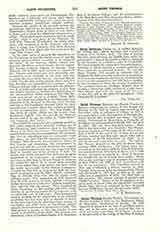

Saint Thomas, Diocese of (SANCTI THOMAE IN INSULA), comprising the Islands of SƒÅo Thomé and Principe, in the Gulf of Guinea, was erected on November 23, 1584, as suffragan of Lisbon; in 1676 it was made subject to the Metropolitan of San Salvador, Brazil, and in 1844 to Lisbon once more. The last bishop, Bartolomeo de Martyribus, a Carmelite of Sandomir, was preconized on March 8, 1816, and died in 1847. The see then remained vacant. Since 1865 it has been ruled as a vicariate. SƒÅo Thomé, lying one hundred and fifty miles off the African mainland at 0° 28′ N. lat. and 6° 42″ E. long., has an area of three hundred and fifty-eight square miles and a population of 37,776 inhabitants (in 1900). It is very fertile, and is noted for its cocoa. The capital, Sao Thorne, situated on the Bay of Santa Anna, contains 6000 inhabitants. The island, when discovered on December 21, 1470, by JoƒÅo de Santarem, was uninhabited; in 1485 Joao de Paiva and in 1493 Pereira attempted to colonize it. Most of the present inhabitants are of African slave origin. About 1544 a ship carrying a cargo of Angolares was wrecked at Sete Pedras and 3000 of their descendants still live in the southwest. The Capuchins arrived in 1659 and established a definite mission in 1688. Principe, lying ninety miles northeast of SƒÅo Thomé and discovered in 1471, had an area of 42 square miles and a population of 4327. Its chief town is Sao Antonio. The diocese contains 8 parishes and 22,000 Catholics. Owing to the development of the cocoa trade in recent years the population, recruited chiefly from Africa, is estimated to have increased by over 20,000 since the last official census (1910).
A. A. MACERLEAN

